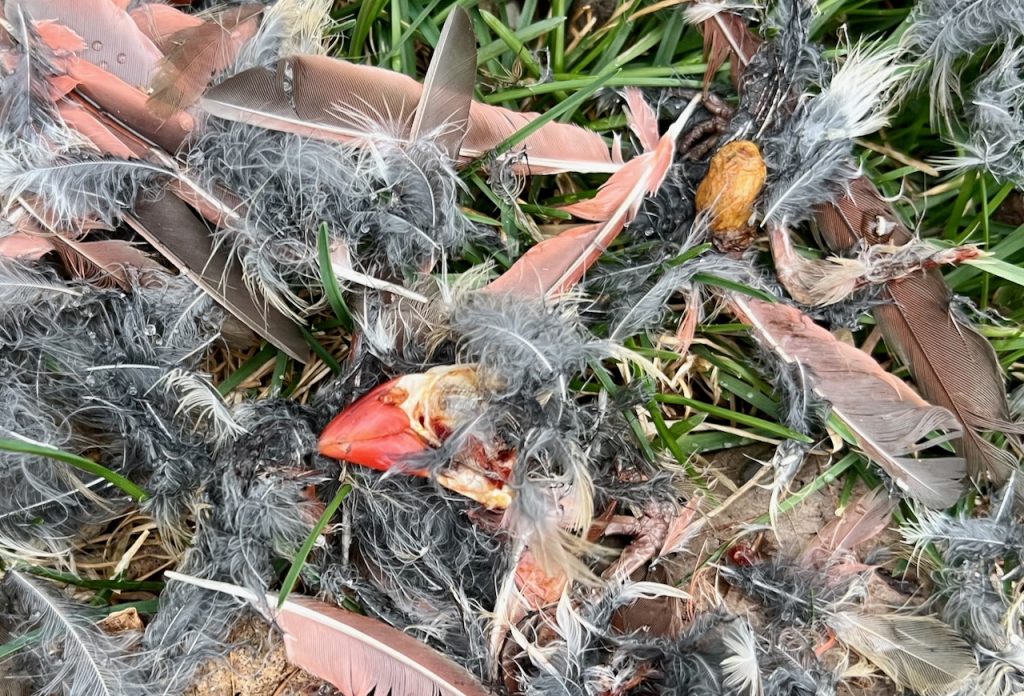I recently had a great talk with Emily Priestley, the author of Urban Sheepdogs. I reviewed her book a few weeks ago, and although I noted some issues, I am a big fan of her attempt to help people understand that the behavior of their border collies or cattle dogs is not a mystery or a sign of dysfunction–rather a manifestation of what the dogs were bred for. These dogs need to be helped to adjust to an urban/suburban environment, not punished for it.
I started out by asking her what she recommends to people who have dogs who are especially sound sensitive, as so many herding breeds tend to be. She answered by saying that she often asks that the dog be checked out by a veterinarian. That led to a discussion about how often pain or illness can exacerbate or create behavior problems, and how important it is to rule it out as a factor in problem behavior.
In our conversation, Emily and I recounted stories of dogs who had behavioral problems that turned out to be driven by pain or illness. She, for example, worked with a dog who developed a noise phobia, and none of the standard protocols were working. It turns out the dog was in a lot of pain from arthritis, which made the dog more reactive to stressors. Many of us can relate: If you’ve had a period of serious, chronic pain, you know it makes you more reactive to things you could’ve shrugged off before.
I had a client whose normally sweet middle-aged dog became so aggressive that the clients were thinking of putting him down. I noticed that he held his head in an atypical posture in my office–it turns out his neck was causing him a lot of pain. A trip to a certified canine chiropractor brought back the cuddly dog that they had always had.
These concerns were highlighted in a study in 2020, which found that veterinarians involved in the study reported 28 to 82% of problem behaviors being influenced by or caused by pain. The authors argue that “there is currently an under-reporting of the ways in which pain can be associated with problem behavior, which is seriously limiting the recognition of this welfare problem.”
I was especially interested in their conclusion that “. . . in general, it is better for veterinarians to treat suspected pain first rather than consider its significance only when the animal does not respond to behavior therapy.”
Getting a prescription for theoretical pain isn’t necessarily something that some medical professionals would consider, and I send kudos to the authors of this paper to suggest it be considered more often. Keep the study in mind if you find yourself needing to advocate for your dog at some point in a clinic setting. This issue brought up some other speed bumps relating to vet appointments before a behavior modification plan is considered.
The first is obvious: Clinics can be far away, and it can cost a lot of money to have your dog carefully checked for illness or pain-inducing conditions. As I thought about my work before I retired from seeing cases, I realized I didn’t always insist that clients got a full health check before I worked with them, although I usually recommended it. If a confident three-year old dog became shy out of the blue, or aggressive to strangers when previously friendly, I’d encourage them to see the vet right away. If an eight-month old, healthy-looking border collie was chasing cars, I probably wouldn’t have IF the clients were clearly stretching both their patience and their budgets. I think what’s most important here is that trainers, behaviorists, veterinarians, and owners are all educated to understand that medical problems are often undiagnosed, and can have a significant effect on behavior.
Convincing others of that isn’t always easy. I had client after client dismiss the possibility of pain as a factor in a dog’s (mis)behavior. “Oh, no!” They’d say, “Look at her, she’s fine!” I’d then ask them how they knew, by first asking them if they thought I was in pain. They’d rarely answer, just stop and look at me, unsure what to say, until I explained that I had a back injury and was actually in a great deal of pain at that very moment. I wasn’t looking for sympathy, just an understanding that the outside of a person/dog doesn’t always tell you what is going on in the inside.
For people skeptical that pain can influence behavior, (you’d be surprised how many), Emily told me she often asks clients if they can imagine having a migraine at work. Would that change how they responded to colleagues, deadlines, difficult phone calls? Of course it would, and it’s a great example that people can relate to–anthropomorphism to the rescue! And it’s not necessarily pain. What if the dog has a hormone imbalance, or feels nauseous all the time? Think of all the physical things that can influence how you feel and behave, and ask yourself why they wouldn’t also be influencing your dog.
Another speed bump relates to the veterinarian him or her self, or, perhaps I should say, the dog’s behavior in the clinic. Remember that middle-aged dog I mentioned who suddenly became aggressive? He HAD been to his vet, and the vet judged him free of any physical problems. This well might have been due to the downside of dopamine, a hormone that that can pair with adrenalin to create feelings of pleasure in social situations and mask pain. No one saw this better than me and my sisters, when we took our elderly mother to the doctor after she complained of being in terrible pain. Before I drove her to the clinic she was slumped, grumpy and miserable. When the doctor entered she lit up like a Christmas tree, smiling and laughing as if she didn’t have a care in the world. This happened so frequently it’s a miracle I have any brain left at all, given how often many times I wanted to smash my head against the wall.
In my experience, some veterinarians are far more receptive to owner reports than others; yet another reason to have a vet who trusts you and listens carefully to what you have to say. One way to try to counter the change in a dog’s behavior from home to clinic is to record the behavior on your phone–perhaps a limp or a head tilt–at home, and then show your vet what is causing you concern. I know lots of vets who would greatly appreciate it. I’ve also found that certified canine chiropractors or physical therapists are trained to look for extremely subtle changes in movement and structure, and have been an essential part of keeping my own dogs healthy. Also, know the common signs of pain in your dog; if Maggie and Skip start licking a leg or joint, I start watching them like a hawk.
What about you? I’m hoping you’ll join in the discussion–what’s your experience been related to physical issues and behavioral problems or changes? Don’t be shy, people tell me they learn so much from the comments, so if you have a minute, join the conversation.
I’ll end this part by mentioning that Emily and I talked about several other issues related to herding breeds–why they are so sound sensitive and movement reactive, and the dangers of misunderstanding “need a job” advice. Stay tuned for more!
MEANWHILE, back on the farm: Skip is not even close to a perfect sheepdog, but there are few that excel him when working in close. Here I am asking him to put the sheep into a pen inside the barn, where they clearly would rather not go. He is so quiet and calm about it, I just adore him for it. FYI, the sheep were being moved into the pen because one ewe is doing poorly, and I don’t want her worked when I’m practicing with the dogs, and I want the vet to come get a look at her.
A few notes: I don’t care if he lies down when I say “Stand,” he’s experienced enough to make his own decision about what is best. He just needs to stop moving forward, how he does that is his call. At 18 seconds I said “come, come,” his cue to go clockwise just a few steps. I whispered “away” at xx to ask him to go a few steps counterclockwise, and had to repeat a cue at xx to get him to flank left again.
Sadly, the ewe didn’t make it. Our dedicated vet, Jeff Kunert from Mount Horeb Animal Hospital came out Saturday to put her down. I took a photo of her once she had passed away, but am choosing not to post it because I thought it might be too upsetting for some. (Although, I have to say she looked so sweet and comfortable, thanks to Jeff’s quiet and compassionate care.) Instead, I’m sending another reminder of how life in the country is a study in life and death on a regular basis. Here’s what I found yesterday behind the house . . .
. . . the remains of a female cardinal, eaten, no doubt, by the Sharp-shinned Hawk who hangs around, like a lion at a water hole, looking for it’s own dinner. As has been said: Well, we do put out bird feeders.
On a more cheerful note, the photo below is some of my California family. I was out last week to visit and support my sister during the last (hopefully!) of some surgeries and medical procedures. Left to right, that’s my brother-in-law Tim (I finally got a brother!), yours truly, my sister Liza, my niece Emily and her husband Darren. What a special, special trip; they are all so dear to me.
It was in the toasty 50’s in Wisconsin when I was in So Cal, but the inevitable happened, the temperature plummeted to the low teens, and the poor daffodils on the farm have paid the price. These are some of the happiest of the bunch, dozens and dozens of others are just frozen buds that might never bloom. But daffs are hardy things, and the late arriving ones are most probably going to be okay, depending on the roller coaster ride of our weird winter.
Bad weather is surely nothing that some chocolate chip scones won’t cure. (I should mention I’m thrilled with the snow itself, we are close to drought conditions here.) Thanks again to King Arthur Baking for their scone mixes. What would I do without them? (My favorites are Lemon Blueberry and Orange Cranberry, just in case you’re about to order. Just leave some for me.)
What’s your favorite of, well, anything these last few weeks?! You name it, we’ll smile about it. And please add your experiences to the discussion about problem behavior and physical/medical issues. You never know who you are going to help out there!



































